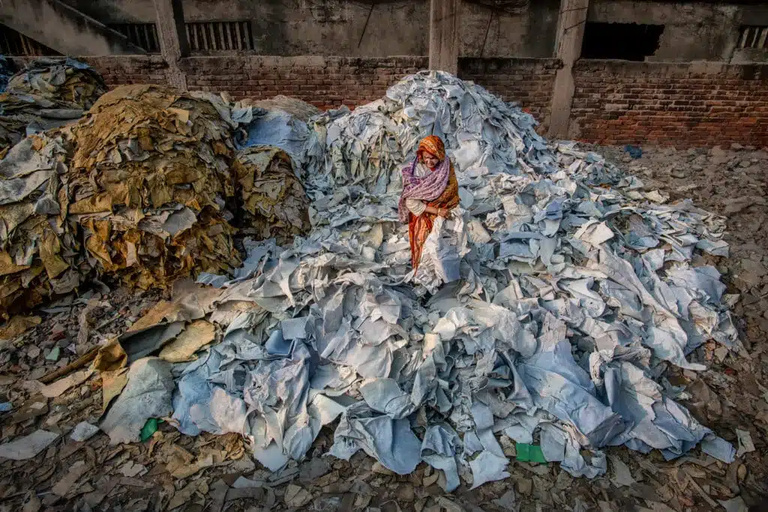In recent years, the fast fashion industry has become a clear symbol of overconsumption, placing growing pressure on both the environment and society. This sector, built on producing massive quantities of low-cost clothing at high speed, contributes significantly to the environmental, economic, and social crises we face today.
From an environmental perspective, fast fashion accounts for around 10% of global carbon emissions, according to reports from platforms like Earth.org and Fairplanet.org. Additionally, the industry wastes enormous amounts of water; producing just one cotton shirt can require between 2,000 to 2,700 liters of water. Furthermore, washing synthetic fiber clothing releases approximately 500,000 tons of microfibers into the oceans annually. Manufacturing processes such as dyeing and finishing are responsible for about 20% of global industrial water pollution, with most textile waste ending up in landfills rather than being recycled.
In terms of resource consumption, the fashion industry produces around 80 billion garments each year, with an estimated 60% ending up in landfills. According to Time and BiologicalDiversity.org, less than 1% of clothing is actually recycled, increasing pressure on environmental resources and reinforcing the "buy fast, discard faster" model.
Socially, the industry relies heavily on cheap labor in developing countries, employing an estimated 75 million workers as most of whom do not earn a living wage and work under dangerous conditions. One stark reminder of the risks faced by these workers is the 2013 Rana Plaza disaster in Bangladesh, where the collapse of a building housing garment factories claimed the lives of more than 1,100 workers producing clothes for major global brands.
Despite these challenges, some initiatives have emerged to break the cycle of overconsumption. Movements like Slow Fashion encourage reduced purchasing and a focus on quality and sustainability, while there is also a growing interest in buying second-hand clothing. Some governments particularly in Europe have begun introducing regulations such as Extended Producer Responsibility and the Right to Repair, aiming to increase transparency and hold companies accountable. However, these efforts still face implementation and enforcement challenges.
The overconsumption of cheap, rapidly produced clothing is no longer just a personal choice, it has become a crisis that demands collective solutions. As consumers, we must reevaluate our purchasing habits, opt for more sustainable choices, and extend the life of our garments. Supporting legislation that enforces corporate responsibility toward both people and the planet is also crucial. Only through such actions can we make a real difference in a world racing toward resource depletion.
